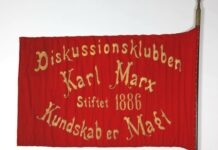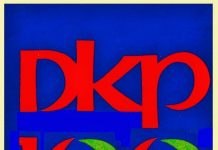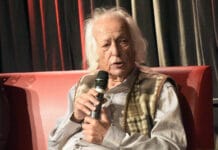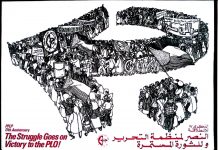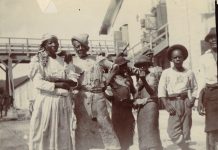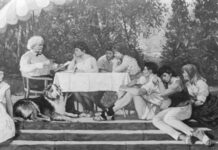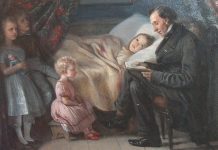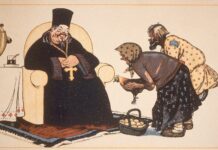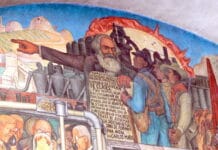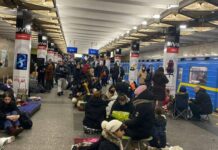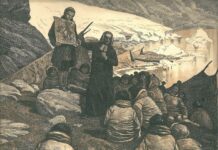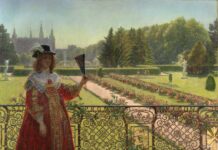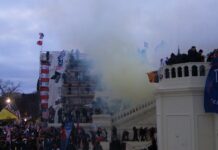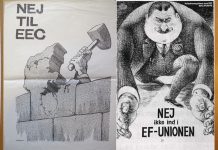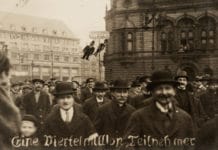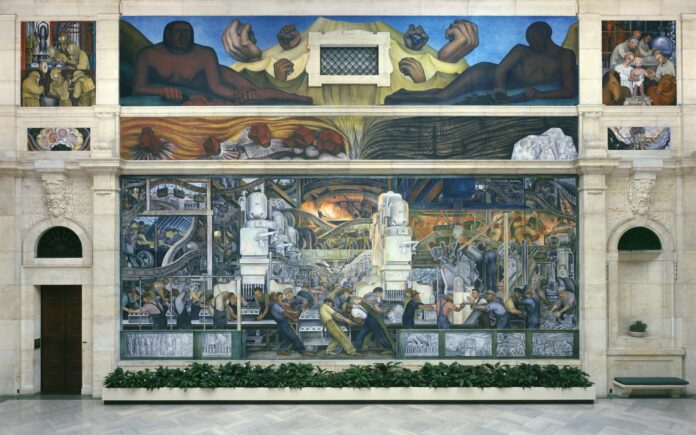
Den mexicanske maler og kommunist Diego Rivera fødes i Guanajuato, Mexico, 8. december 1886 som Diego María Rivera Concepción Juan Nepomuceno Estanislao de la Rivera y Barrientos Acosta y Rodríguez. (Dør 24. november 1957 i San Angel, Mexico City). Mest kendt for sine omdiskuterede murmalerier – murals – med politisk/kommunistisk baggrund og motiver om klassekamp, kolonialisme og folkets historie. Gift med maleren Frida Kahlo (1907-54). Vært for den eksilerede Lev Trotskij 9. januar 1937 – 5. maj 1939, som han skaffede asyl i Mexico.
Indhold
- Biografi mv. (in Danish & English)
- Artikler på dansk/svensk:
- Articles in English
- Se også / See also
- Se også på Socialistisk Bibliotek

Diego Rivera’s America: A tantalizing exhibition at the San Francisco Museum of Modern Art
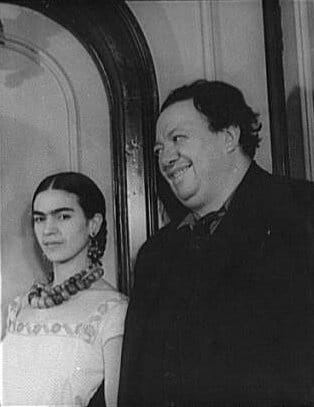
Biografi mv. (in Danish & English)
- Rivera, Diego (Leksikon.org)
- Diego Rivera (Wikipedia.dk)
- Diego Rivera (Wikipedia.org). Med mange links.
Online værker: - Diego Rivera: Paintings, Murals, Biography, Quotes (Diegorivera.org)
- Virtual Diego Rivera Web Museum (Diegorivera.com)
- Diego Rivera Works Online (ArtCyclopedia). Incl. Museums and Public Art Galleries Worldwide.
- Diego Rivera (Artchive.com). Med links og image list i bunden.
- Mexican Muralists Exhibits (Marxists Internet Archive) + Painting: Mexican Muralists.
Artikler på dansk/svensk:
Farverig, spontan og rebelsk levemand. Af Bjarne Nielsen (Arbejderen, 24. november 2007)
“Diego Rivera var muralist og malede Mexicos historie og befolkning. Riveras produktion viser nu tydeligt, at han beherskede dialektikken og den historiske materialisme.”
Diego Rivera: Arbejderklassens maler. Af John Flagga (Socialistisk Arbejderavis, nr.179, januar 2000)
“Diego Rivera stod der på plakaten ved indgangen til Kunstforeningen på Gl. Strand.”
Pierre Broué om brytningen mellan Trotskij och Diego Rivera (pdf) (Marxistarkiv.se, 23. marts 2015)
“Ett utdrag ur Pierre Broués Trotskij-biografi som utförligt beskriver relationerna och brytningen mellan Trotskij och Rivera.”
Articles in English:
By Rivera / Trotsky:
Haya de la Torre and Democracy. A program of a militant struggle or of adaptation to American Imperialism. By Diego Rivera (The New International, Vol.5, No.2, February 1939, p.45.; online at Marxists Internet Archive)
Clarity or confusion? By Leon Trotsky (The New International, Vol.5, No.3, March 1939, p.86-88; online at Marxists Internet Archive). Unsigned editorial in Clave [Mexico].
Others on Rivera:
Diego Rivera’s resolute socialism is on full display in his mural Pan American Unity. By Joel Whitney (Jacobin, October 25, 2022)
“Diego Rivera was a champion of the socialist cause who sought to produce art that ‘belongs to all mankind’. Nowhere was this vision more clear than in his mural Pan American Unity, a homage to Hollywood, Mexican culture, and modernism.”
Diego Rivera in the Soviet Union: An exhibition in Mexico City. By Alex González (World Socialist Web Site, 12 January 2018)
“The current exhibition in Mexico City … focuses on the artist’s two visits to the Soviet Union, the first in 1927-28 and the second in 1955-56 … Rivera had a long and complicated history with the Communist Party and the Soviet Union, most of which, unfortunately, is not examined in the current show.”
Again: “I paint what I see, said Rivera (Climate & Capitalism, November 24, 2017)
“This poem by E.B. White, later known as the author of the children’s classic Charlotte’s Web, appeared in New Yorker magazine in May 1933 … In 1933, Diego Rivera painted the mural, Man at the Crossroads, in Rockefeller Center in New York City.”
In defense of Diego Rivera’s Detroit Industry frescoes: “Diego Rivera and Frida Kahlo in Detroit”, at the Detroit Institute of Arts. By Tim Rivers and David Walsh (World Socialist Web Site, 21 April 2015)
“The exhibition contains much that is fascinating and even sublime. However, the overall approach taken by the curators, which exalts art concentrated on the ‘self’, is troubling and, in some places, wrongheaded and even reactionary.”
Diego Rivera’s ‘Battle of Detroit’: The working class and the Detroit Industry murals at the DIA. By Tom Mackaman and Jerry White (World Socialist Web Site, 3 October 2013)
“When Diego Rivera arrived in Detroit in April 1932 to create what he was later to consider his greatest work, the Detroit Industry murals, he entered an extraordinarily charged political and social environment.”
Eighty years of the Diego Rivera murals at the Detroit Institute of Arts. By Tim Rivers and David Walsh (World Socialist Web Site, 5 September 2013)
“The murals, first viewed by the public in March 1933, consist of more than two dozen panels that magnificently cover the four walls and ceiling of what is known as the Rivera Court. They depict, first of all, automobile production in all its stages, with the activity of the workers in the forefront.”
Diego Rivera at the Museum of Modern Art: Then and now – revolutionary art for revolutionary times. By Clare Hurley (World Socialist Web Site, 21 December 2011)
Leon Trotsky on Mexican painter Diego Rivera (1938) (World Socialist Web Site, 21 December 2011)
“Leon Trotsky discussed the work of Mexican painter and muralist Diego Rivera, who was at that time in political sympathy with the Fourth International.”
Rivera and Kahlo: the power, insight and sadness of art radicals (Socialist Worker, Issue 2261, 19 Jul 2011)
“Siân Ruddick visits a new exhibition of the art and revolutionary politics of Diego Rivera and Frida Kahlo.”
Art, artists and the difficulties of the twentieth century. By Joanne Laurier (World Socialist Web Site, 16 October 2008). About a new documentary film.
What made Frida Kahlo remarkable? By Joanne Laurier (World Socialist Web Site, 7 November 2002)
Review of Julie Taymor’s film: Frida focuses on the relationship between Kahlo (Salma Hayek) and Rivera (Alfred Molina).”
Diego Rivera’s artistic mastery. By Tim Tower (World Socialist Web Site, 2 September 1999)
“For his entire conscious life Rivera remained an outspoken defender of the oppressed and sympathizer of revolutions throughout the world. Both artistic and political controversies swirled around him. He fought, often heroically, for his convictions.”
Diego Rivera and the left: The destruction and recreation of the Rockefeller Center Mural (pdf). By Dora Apel (Left History, Vol.6, No.1, Spring 1998, p.57-75)
“Diego Rivera … became famous nationally and internationally when his mural for the Radio City of America (RCA) Building at Rockefeller Center in New York City was halted on 9 May 1933, and subsequently destroyed on 10 February 1934.”
“I paint what I see,” said Rivera (Climate & Capitalism, December 7, 2011). Poem by E.B. White, appeared in New Yorker magazine in May 1933.
Creative tension. By Chris Harman (Socialist Review, Issue 254, July 2001). Review of Mike Gonzalez: Diego Rivera: The Man Who Painted Walls (Redwords, 2001, 71 p.).
Video: Frida Kahlo and Diego Rivera Visit Leon Trotsky in Mexico, 1938 (Open Culture, July 16, 2012, 1:54 min.)
Se også / See also:
- Paint the Revolution: Mexican Modernism 1910–1950 – a significant exhibition.
By Gary Alvernia (World Socialist Web Site, 28 April 2017) - Muralismo (Wikipedia.dk). Artikel om murales, med links til stor engelsk artikel.
Se også på Socialistisk Bibliotek:
- Tidslinjen: 6. juli 1907, om Frida Kahlo.
- Tidslinjen: 21. august 1940, om Trotskijs ophold og mord i Mexico.
Diego Rivera’s America: A tantalizing exhibition at the San Francisco Museum of Modern Art
Manifestet Towards a Free revolutionary Art. Signeret af Diego Rivera & André Breton, men anses for skrevet af Lev Trotskij & André Breton, se noten til den danske oversættelse: Surrealisme: For en uafhængig revolutionær kunst (Socialistisk Information, 8. marts 2009). See also Many Thain: Surrealism’s revolutionary heart (Socialism Today, Issue 120, July-August 2008) **
**
“This contradictory and bizarre document seems to have been written by Breton and amazingly Trotsky, with Rivera substituting for Trotsky’s signature when he got cold feet. It is not clear when Trotsky helped write this document what he thought he was doing, as it went against everything he had ever done or said.”
Source:
1919-1950: The politics of Surrealism. By Nick Heath (Libcom.org, September 11, 2006).
“Breton in showing solidarity, as one of a few intellectuals to support the libertarian movement in a period of repression … some of the Surrealists were allying with Trotskyism and oppositional Bolshevism …”
Beyond reality: on a century of Surrealism. By Alexander Billet (Against the Current, Issue 233, November-December 2024). “Strangeness is certainly part of surrealism, though to leave it at that would be woefully insufficient.”
Surrealism as a revolutionary movement (Anticapitalist Resistance, 13 September 2024). “Surrealism has been an international movement since its inception. However, here Michael Löwy focuses mainly on the Paris surrealist group, initially around André Breton, but which continued its activity after the death of the author of the Surrealist Manifestos.”
